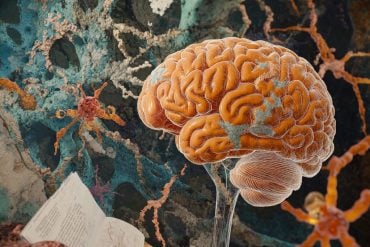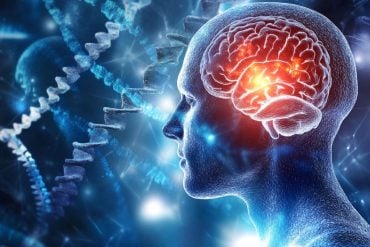Summary: Researchers report a signalling mechanism in the brain shapes social behavior. The findings may have implications for better understanding social hierarchies, aggression and bullying.
Source: Duke NUS Medical School.
Duke-NUS researchers have discovered that a growth factor protein, called brain-derived neurotrophic factor (BDNF), and its receptor, tropomyosin receptor kinase B (TrkB) affects social dominance in mice. The research has implications for understanding the neurobiology of aggression and bullying.
“Humans and rodents are social animals. Our every interaction follows rules according to a social hierarchy. Failure to navigate this hierarchy can be detrimental.” explained senior author A/Prof. Hyunsoo Shawn Je, from the Neuroscience and Behavioural Disorders Signature Research Programme at Duke-NUS Medical School. “Our paper may be the first to demonstrate that specific molecular signalling pathways in specialised nerve cells, in a particular location in the brain, are important for the balanced navigation of social hierarchies.”
Difficulties in navigating these hierarchies can lead to problems like aggression and bullying. “Given the heavy societal cost of bullying and aggression, understanding the biological causes is a step towards their effective prevention and treatment,” A/Prof. Je added.
Activity within the brain is mediated by circuits made up of excitatory neurons, which ramp up activity, and GABA-ergic interneurons, which inhibit and quiet the excitatory activity. Previous studies have shown that BDNF-TrkB signalling is important for the maturation of GABA-ergic interneurons and the development of nerve circuits in the brain. But researchers have not been able to pinpoint the behavioural consequences of disrupted BDNF-TrkB signalling.
A/Prof. Je’s team generated transgenic mice in which the TrkB receptor was removed specifically in the GABAergic interneurons in the area of the brain regulating emotional and social behaviour, known as the corticolimbic system. The transgenic mice exhibited unusual aggressive behaviour when housed together with normal mice. To understand the origin of this behaviour, the team conducted behavioural tests. They found that the mice were not being aggressive to protect their territory. They were also not being aggressive because they were stronger; the transgenic mice were injured more than other mice during acts of aggression. Instead, their aggressive behaviour was a result of increased fighting for status and dominance over other mice in the group.

The researchers found that due to the loss of BDNF-TrkB, GABA-ergic interneurons in these transgenic mice supplied weaker inhibition to surrounding excitatory cells, which became overactive. They proceeded to shut down excitatory neurons in a specific area of the transgenic mice brains, which re-established the “excitatory/inhibitory” balance and which “instantaneously reversed the abnormal social dominance”, says Duke-NUS post-doctoral research fellow Dr. Shawn Pang Hao Tan, who was the first author of the paper.
A significant amount of research has focused on the roles of family and peer networks on aggressive behaviour. This study, together with other recently published findings, demonstrates that genetic and biological factors can play an unexpected role in social behaviours, said Je.
Source: Federico Graciano – Duke NUS Medical School
Publisher: Organized by NeuroscienceNews.com.
Image Source: NeuroscienceNews.com image is in the public domain.
Original Research: Abstract for “Postnatal TrkB ablation in corticolimbic interneurons induces social dominance in male mice” by Shawn Tan, Yixin Xiao, Henry H. Yin, Albert I. Chen, Tuck Wah Soong, and H. Shawn Je in PNAS. Published October 3 2018.
doi:10.1073/pnas.1812083115
[cbtabs][cbtab title=”MLA”]Duke NUS Medical School”The Neurobiology of Social Aggression.” NeuroscienceNews. NeuroscienceNews, 19 October 2018.
<https://neurosciencenews.com/social-aggression-neurobiology-10059/>.[/cbtab][cbtab title=”APA”]Duke NUS Medical School(2018, October 19). The Neurobiology of Social Aggression. NeuroscienceNews. Retrieved October 19, 2018 from https://neurosciencenews.com/social-aggression-neurobiology-10059/[/cbtab][cbtab title=”Chicago”]Duke NUS Medical School”The Neurobiology of Social Aggression.” https://neurosciencenews.com/social-aggression-neurobiology-10059/ (accessed October 19, 2018).[/cbtab][/cbtabs]
Abstract
Postnatal TrkB ablation in corticolimbic interneurons induces social dominance in male mice
Our ability to reason, feel, and socialize relies on the development of a tight balance between inhibition and excitation within cortical circuits. The growth factor BDNF and its receptor TrkB are important for inhibitory neuron development and have been implicated in neuropsychiatric disorders. However, the behavioral consequences of impaired BDNF/TrkB signaling are unknown. Using a transgenic mouse line, we show that mice with deletion of BDNF/TrkB signaling from cortical inhibitory neurons exhibit social dominance and decreased inhibition within the prefrontal cortex, a key region regulating social behavior. Reversal of the network imbalance with optogenetic inhibition could rescue the behavior. Our results reveal a previously uncharacterized role of growth factor signaling within cortical interneurons for the development of social cognition.
Abstract
The tight balance between synaptic excitation and inhibition (E/I) within neocortical circuits in the mammalian brain is important for complex behavior. Many loss-of-function studies have demonstrated that brain-derived neurotrophic factor (BDNF) and its cognate receptor tropomyosin receptor kinase B (TrkB) are essential for the development of inhibitory GABAergic neurons. However, behavioral consequences of impaired BDNF/TrkB signaling in GABAergic neurons remain unclear, largely due to confounding motor function deficits observed in previous animal models. In this study, we generated conditional knockout mice (TrkB cKO) in which TrkB was ablated from a majority of corticolimbic GABAergic interneurons postnatally. These mice showed intact motor coordination and movement, but exhibited enhanced dominance over other mice in a group-housed setting. In addition, immature fast-spiking GABAergic neurons of TrkB cKO mice resulted in an E/I imbalance in layer 5 microcircuits within the medial prefrontal cortex (mPFC), a key region regulating social dominance. Restoring the E/I imbalance via optogenetic modulation in the mPFC of TrkB cKO mice normalized their social dominance behavior. Taken together, our results provide strong evidence for a role of BDNF/TrkB signaling in inhibitory synaptic modulation and social dominance behavior in mice.






